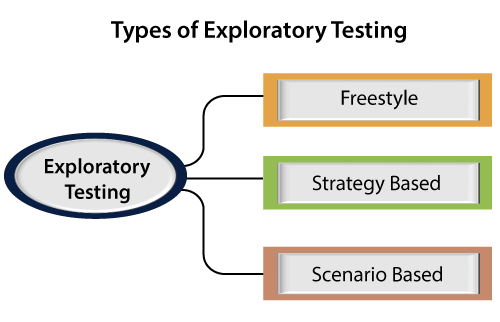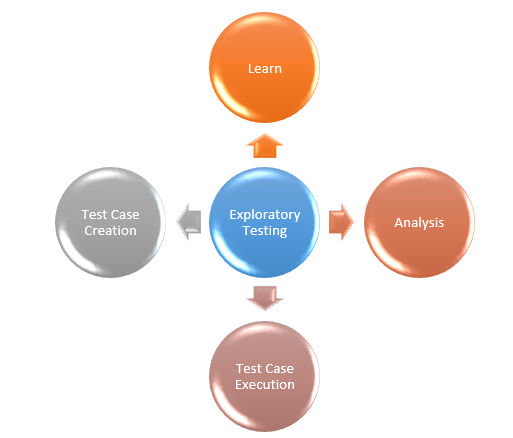Back to: Software Testing Tutorials
Exploratory Testing
In this article, I am going to discuss Exploratory Testing. Please read our previous article where we discussed Recovery Testing. At the end of this article, you will understand the following important pointers which are related to Exploratory Testing.
- What is Exploratory Testing?
- Why Conduct Exploratory Testing?
- When Should You Employ Exploratory Testing?
- How to Perform Exploratory Testing?
- Why use Exploratory Testing?
- Types of Exploratory Testing
- What are Exploratory Testing Techniques?
- Explain the Exploratory Testing Process
- Mention the Exploratory Testing Best Practices
- What are the Challenges faced in Exploratory Testing?
- What are the Advantages of Exploratory Testing?
- What are the Disadvantages of Exploratory Testing?
What is Exploratory Testing?
Software testing known as exploratory testing allows the tester to use any testing methodology they see fit. It is a natural method of software testing. Software engineers test the software they have created for themselves through exploratory testing, which makes use of their individual learning, knowledge, skills, and abilities.
Exploratory testing examines the software’s operation and functionality while also spotting any technical and functional flaws. Exploratory testing seeks to maximize and enhance the program in every aspect. The exploratory testing method blends a structured testing strategy with tester expertise. It’s frequently used as a black box testing method. 4 An unscripted testing method is exploratory testing.
Instead of preparing test cases in advance, testers use exploratory testing to check the system as they go. They might make notes about potential test subjects before conducting the experiment. More focus is placed on testing as a “thinking” activity during exploratory testing. Agile models frequently employ exploratory testing, which is all about research, learning, and discovery. It places a focus on the tester’s autonomy and accountability.
Why Conduct Exploratory Testing?
In scripted testing, you first create the test cases before moving on to the test execution. Exploratory testing, on the other hand, combines the processes of test design and test execution in one step. Scripted test execution often involves testers performing the test stages and comparing the outcomes to what was anticipated. Such test execution work can be automated and doesn’t call for a lot of cognitive abilities. Exploratory testing is a novel way of thinking, despite the current tendency in software testing, which is to push for automation. The limits of automation.
When Should You Employ Exploratory Testing?
- When you need to learn about the application quickly: Exploratory testing is advantageous in situations when a new tester must quickly become familiar with the program and offer input.
- Review from a user’s perspective: It is useful when reviewing products from the viewpoint of the customer.
- Early iteration is necessary: When an early iteration is necessary and the teams don’t have much time to arrange the test cases, exploratory testing can be useful.
- Mission-critical application testing: Exploratory testing makes sure the tester doesn’t overlook edge scenarios that could result in serious quality failures.
- Aid Unit Test: Exploratory testing can support unit tests by helping to describe the test cases and use those test cases to do in-depth testing in later sprints.
How to Perform Exploratory Testing?
In order to conduct exploratory testing, we will first begin utilizing the program and learn about its requirements from those with strong product knowledge, such as senior test engineers and developers. After investigating the application, we will prepare the relevant document, which will be delivered to the domain expert for review. Additionally, we may test the application using our experience and a rival product that has already been out on the market.
Why use Exploratory Testing?
Several justifications for employing exploratory testing are listed below:
- Exploratory testing is random and unstructured, which makes it a good way to find bugs that might not have been found during more organized testing phases.
- User stories can be played with by testers: During exploratory testing, testers can annotate errors, add assertions, and record voice memos, transforming the user story into a test case.
- Facilitate agile workflow by automatically formalizing and documenting exploratory testing findings. With the use of visual feedback, everyone can take part in exploratory testing, allowing the team to respond to changes more rapidly and promoting agile workflow.
- Enhance the conventional testing process by utilizing automated test case documentation tools, enabling testers to transform their exploratory testing sequences into functional test scripts.
- Speeds up Documentation: Exploratory testing hastens the documentation process and establishes a quick feedback loop.
- Documentation export to test cases: exploratory testing integration with software like Jira Test cases can be created directly from recorded documentation.
Explain Types of Exploratory Testing
There are three components to exploratory testing, which are as follows:

- Freestyle: We did not adhere to any rules during freestyle testing, there is no maximum coverage, and we will investigate the application similarly to ad hoc testing. To learn more about the software and examine the work of the other test engineers, we can use freestyle exploratory testing.
- Strategy-Based: Several testing methods, including equivalence partitioning, boundary value analysis, and risk-based, can be used to do strategy-based exploratory testing. It is carried out by an expert tester who has used the application for the longest since they are well-versed in it.
- Scenario-Based: Multiple scenarios, including end-to-end, test scenarios, and real user situations, are used to conduct scenario-based exploratory testing. While investigating the program, the test engineer can identify flaws and examine various sets of scenarios’ potential outcomes using their application knowledge.
What are Exploratory Testing Techniques?
- Ad-hoc testing with the intention of finding bugs is not random testing.
- Is organized and exacting
- Compares favorably to the procedural framework of scripted testing in terms of cognitive (thinking) structure. This framework is derived from time boxing, charter, etc.
- Is very teachable and controllable.
- It embodies more of a methodology than a mere technique. What you are doing right now determines what you will do next.
Explain the Exploratory Testing Process
The exploratory testing procedure consists of the following 4 steps:

- Learn: During the initial stage of exploratory testing, the tester gains knowledge of any flaws or problems that may exist in the product. The tester employs observational skills, technical expertise, and experience to determine what kind of issue the software is experiencing. The first stage of exploratory testing is this. For the tester, it also requires a variety of new learning.
- Development of Test Cases: After a fault has been located, or when the tester has determined the type of issue the program is experiencing, the tester develops test cases in accordance with the faults in order to test the software. Test cases are created with the potential issues that end users may encounter in mind.
- Test Case Execution: The tester carried out the test cases after creating them in accordance with end-user problems. A crucial stage of any testing procedure is the execution of test cases. Included in this are the computational and operational tasks carried out by the software to provide the required results.
- Analysis: After the test cases are completed, the results are examined to determine whether or not the software is functioning correctly. If any flaws are discovered, they are corrected, and the previous three processes are repeated. Software testing is done as a result of the cycle that this entire process follows.
Mention the Exploratory Testing Best Practices
- Recognize the customer: A thorough understanding of the customer’s perspective and expectations is essential for effective exploratory testing. Depending on their age, gender preference, and other criteria, end users navigate the same program in various ways. The software must be tested from each of these user perspectives.
- The purpose of the test should be clear: For effective exploratory testing, it is critical that the testers have a focused attitude and understand the purpose of the test. It is important for testers to keep detailed records of what needs to be tested and why.
- Proper Documentation: Proper note-taking, documenting, and monitoring of test coverage, risk, Test execution log, issues, and queries are essential.
- Tracking issues: During testing, questions and problems should be properly recorded by the tester.
What are the Challenges faced in Exploratory Testing?
- Replication of failure: It might be challenging to pinpoint the source of replication of failure in exploratory testing.
- Best test case selection is challenging: When conducting exploratory testing, selecting the best test case to run or the best tool to utilize might be difficult.
- All events are challenging to record during exploratory testing: Recording all events is challenging.
- Reporting test results in exploratory testing are challenging since there are no carefully defined test scripts to compare the results with.
What are the Advantages of Exploratory Testing?
Here are a few advantages of exploratory testing:
- Less preparation needed: Since it is an unscripted testing technique, there is no requirement.
- Critical flaws are readily discovered by exploratory testing, which also incorporates an investigation phase.
- Enhances Productivity: In exploratory testing, testers test the software using their expertise, skills, and experience. Executing additional test cases encourages testers to use their imaginations more, improving the software’s overall quality.
- New Idea Generation: Exploratory testing promotes creativity and intuition, which results in the creation of new ideas as the test is being run.
- Discover bugs that are typically missed by conventional testing techniques: Exploratory testing helps to find bugs that are missed in test cases.
What are the Disadvantages of Exploratory Testing?
Exploratory testing has the following drawbacks:
- Tests cannot be examined beforehand because they are run at random during exploratory testing, making it unable to do so afterward.
- Dependent on tester expertise: In exploratory testing, the testing is reliant on the tester’s expertise, knowledge, and experience. As a result, it is constrained by the tester’s domain expertise.
- Tests are hard to remember: It can be challenging to keep track of the tests run during exploratory testing because testing is done on the fly.
- Methodology of the test cannot be repeated: Because exploratory testing is ad hoc in nature, it is not appropriate for longer execution times and it is not practical to replicate the same testing approach.
In the next article, I am going to discuss Visual Testing. Here, in this article, I try to explain Exploratory Testing. I hope you enjoy this Exploratory Testing article.

